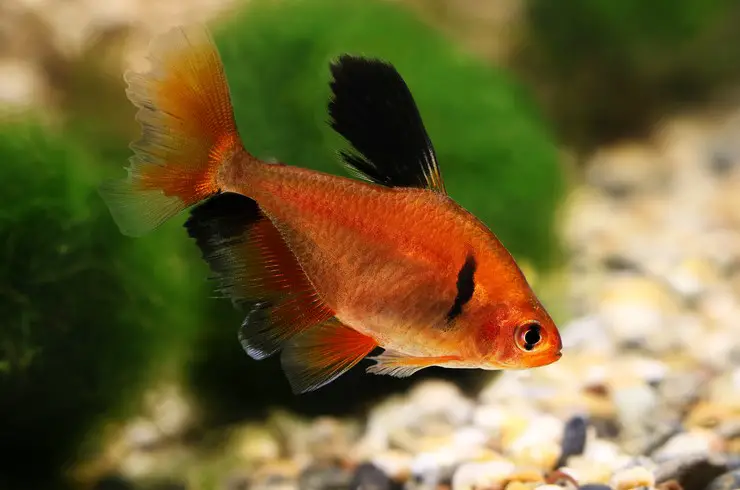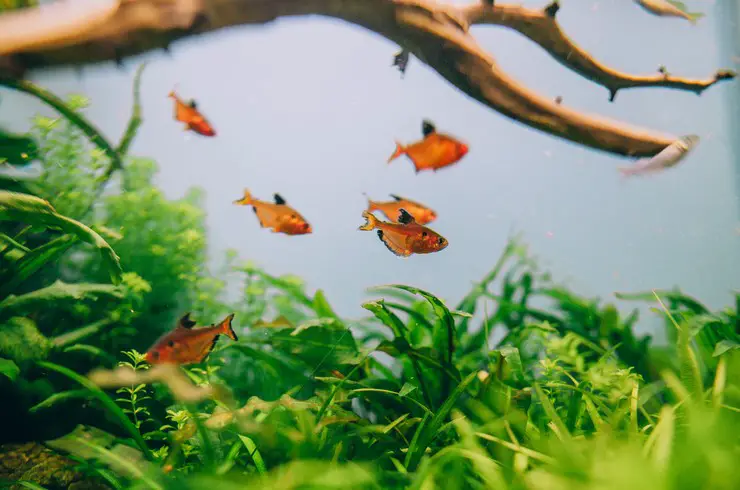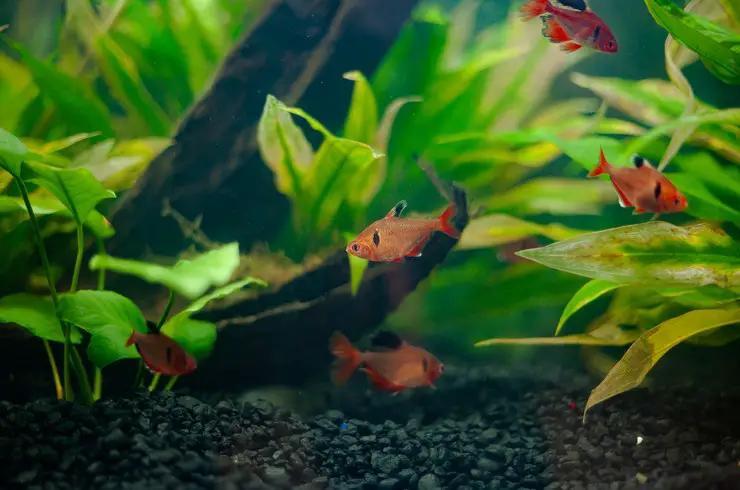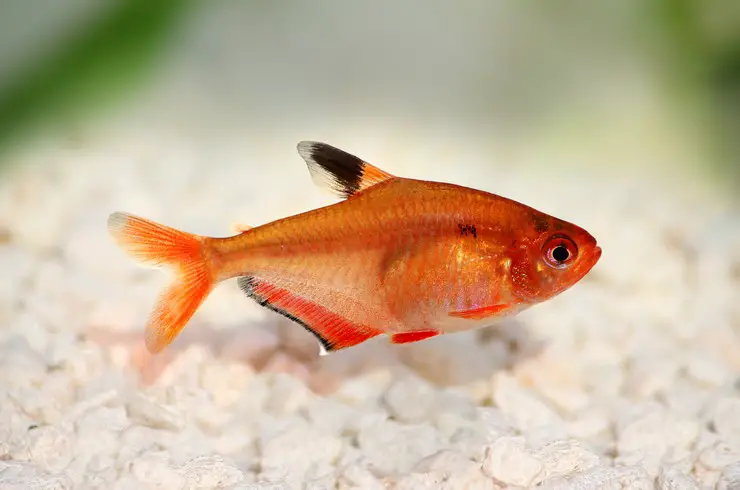Fish with a red body color looks very impressive in aquariums and always attract the attention of others. That is why minors remain one of the most popular harassing ones. These fish, not only brightly colored but also quite unpretentious in content, will be discussed in our article.
General information
Minor, or crescent (Hephessobrycon minor) is one of the most popular representatives of South American tetras. It is difficult to take your eyes off the flock of minors because their rich red outfit is simply mesmerizing.
Minors are schooling fish, they feel more comfortable surrounded by their relatives. In general, a rather peaceful creature, but sometimes he does not mind hooliganism – pinching the tails and fins of slow-swimming or veiled fish. In addition to its beauty, it is distinguished by great endurance and can be recommended for the maintenance of novice aquarists. Under suitable conditions, minors can live in an aquarium for up to 6 years.
Appearance
The minor has a slender, laterally flattened, and high body. The color of the body is bright red with reflections. A black spot is located behind the gills. A characteristic feature of the fish is a quadrangular dorsal fin. It is painted black, often with white edging. The anal and caudal fins are red. There is a veiled form with elongated fins. The size of the aquarium does not exceed 4-5 cm. Males are colored brighter than females.
Habitat
The first scientific description of the species was written in 1882. It is widespread in tropical South America. Numerous flocks live in rivers flowing in countries such as Paraguay, Brazil, Guiana. Serpas prefer reservoirs with stagnant water and dense thickets of vegetation. The fish keep near the surface of the water, where they feed on insects and their larvae. They unite in flocks, where conflicts often arise, ending in bitten fins in individual individuals.
Care and maintenance
Although the Minors are small fish, they love to swim actively. It is necessary to keep fish in flocks of 5 or more. Therefore the minimum aquarium volume is 30 liters. It is better to choose dark soil, on it the fish will look much brighter. It is advisable to place a large number of shelters in the aquarium – natural driftwood and live plants.
It is important to equip the aquarium with a suitable filter and aerator but avoid strong currents. The thermostat will allow you to maintain a comfortable temperature of 22-28 ° C. Optimum hardness – up to 15 degrees, acidity – 6.0-7.2. It will be beneficial to recreate the “black water” effect inherent in natural habitats in the aquarium. To do this, you can use the Tetra ToruMin conditioner with natural peat extract. The color of the minors can serve as an indicator of the state of the aquarium. If the fish turns pale, then the conditions of detention are not suitable for it.
Any plants can be planted in an aquarium with minors, including those floating on the surface, the fish will not harm them.
Compatibility
Serpas are considered good fish to keep in community aquariums, but their cocky nature must be considered. It is best to plant with minors of large and fast fish: zebrafish, black neons, barbs, irises. Slow neighbors, as well as long-finned roommates, will be constantly pursued by the Minors. Therefore, it is better not to add them to the aquarium with goldfish, scalars, or a cockerel. Fish must be kept in a flock. A hierarchy is built within the group, and the fish support it, not paying attention to their neighbors.
Reproduction and breeding
Breeding minors is not particularly difficult, the main thing is to choose the correct water parameters in the spawning grounds. It should be 6-10 liters in volume. A separator mesh or Javanese moss is placed on the bottom. The lighting must be dim.
The water parameters in the spawning aquarium should be: T = 27 ° C, pH = 6.0, GH = 6-8.
Minors spawn in pairs and in groups. Puberty occurs at 8-10 months. Producers are seated and fed with high-protein feed. Closer to spawning, the males become brighter, and the abdomen of the females is rounded from the eggs. After that, in the evening it is necessary to plant the fish in the spawning ground. Spawning occurs at dawn. Eggs in the amount of 200-300 pcs. remain on plants. At the end of the process, the producers are set aside, and the aquarium is darkened since bright light is detrimental to the eggs.
The fry hatch in about 24-48 hours. And after a few days, they are already able to feed on their own. During this period, you can turn on lighting and aeration. As they mature, you can start feeding quality dry food for fry, such as TetraMin Baby.

